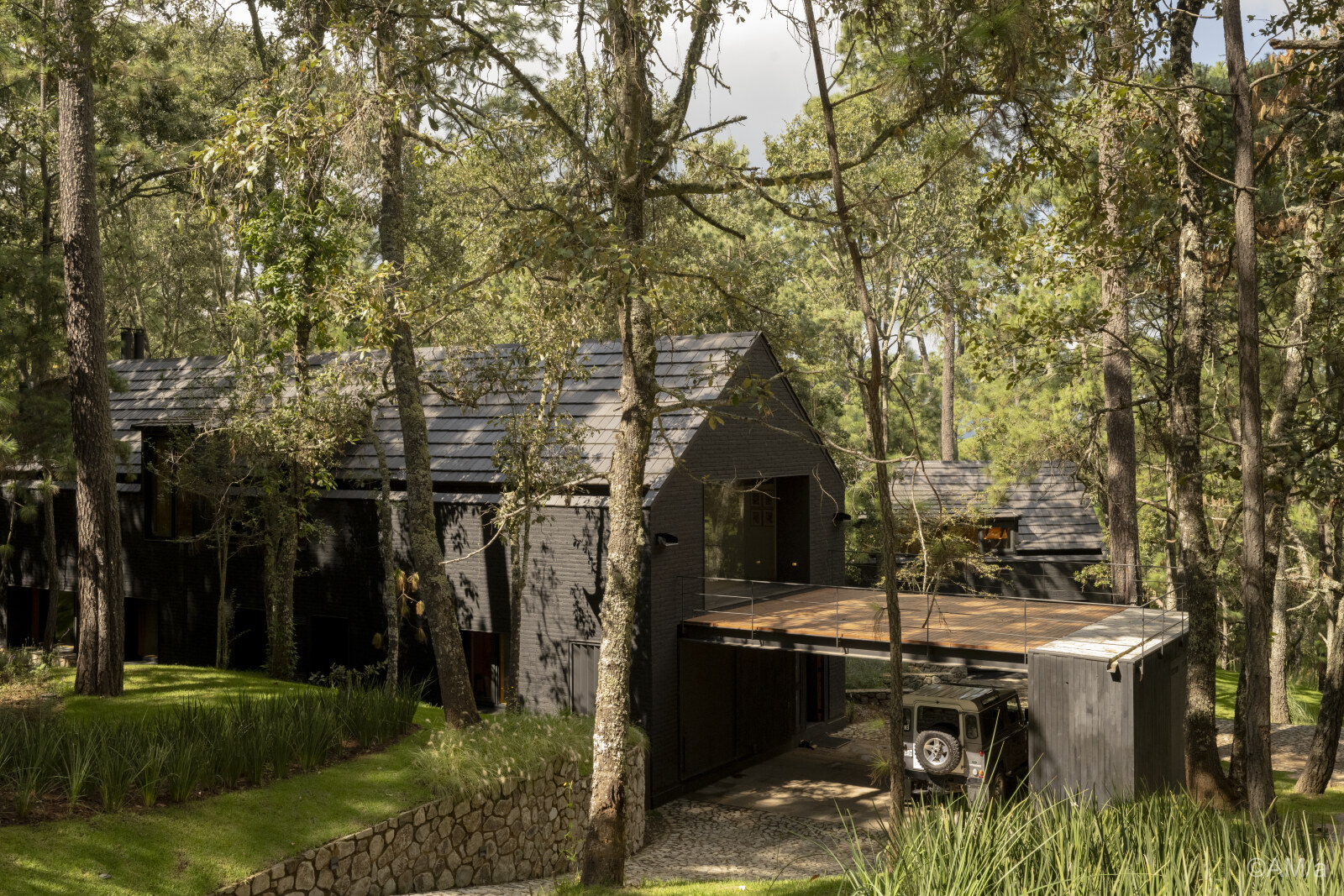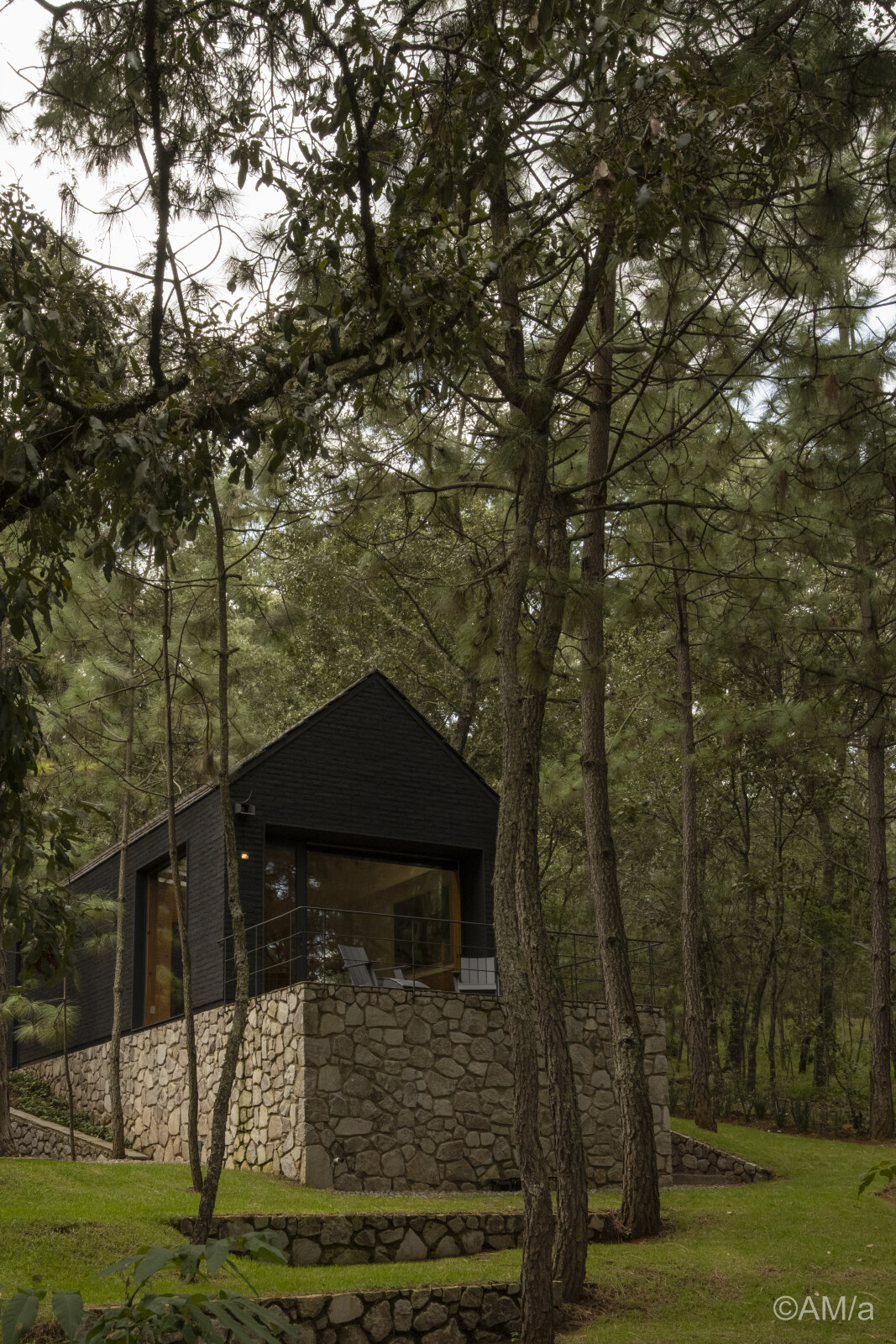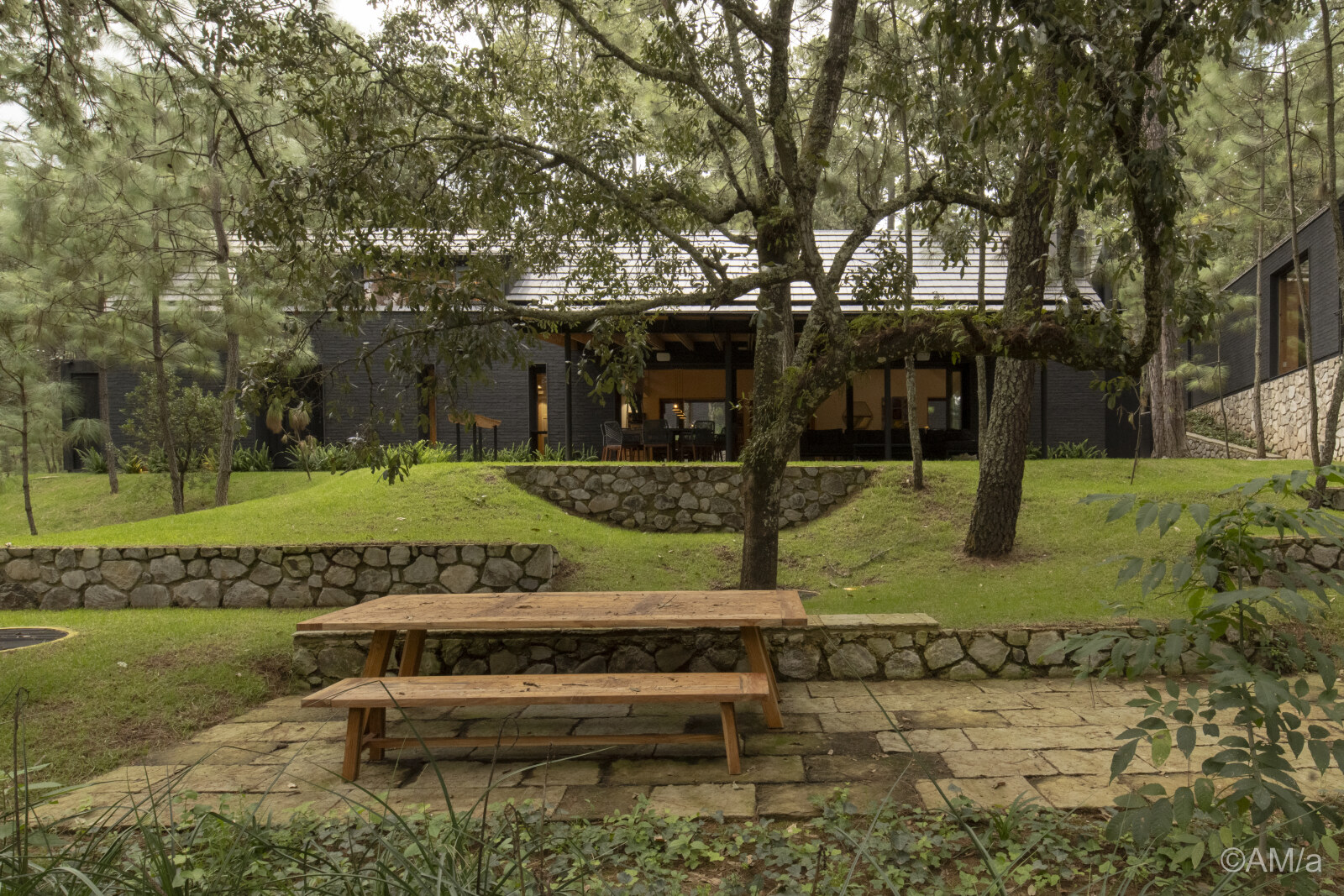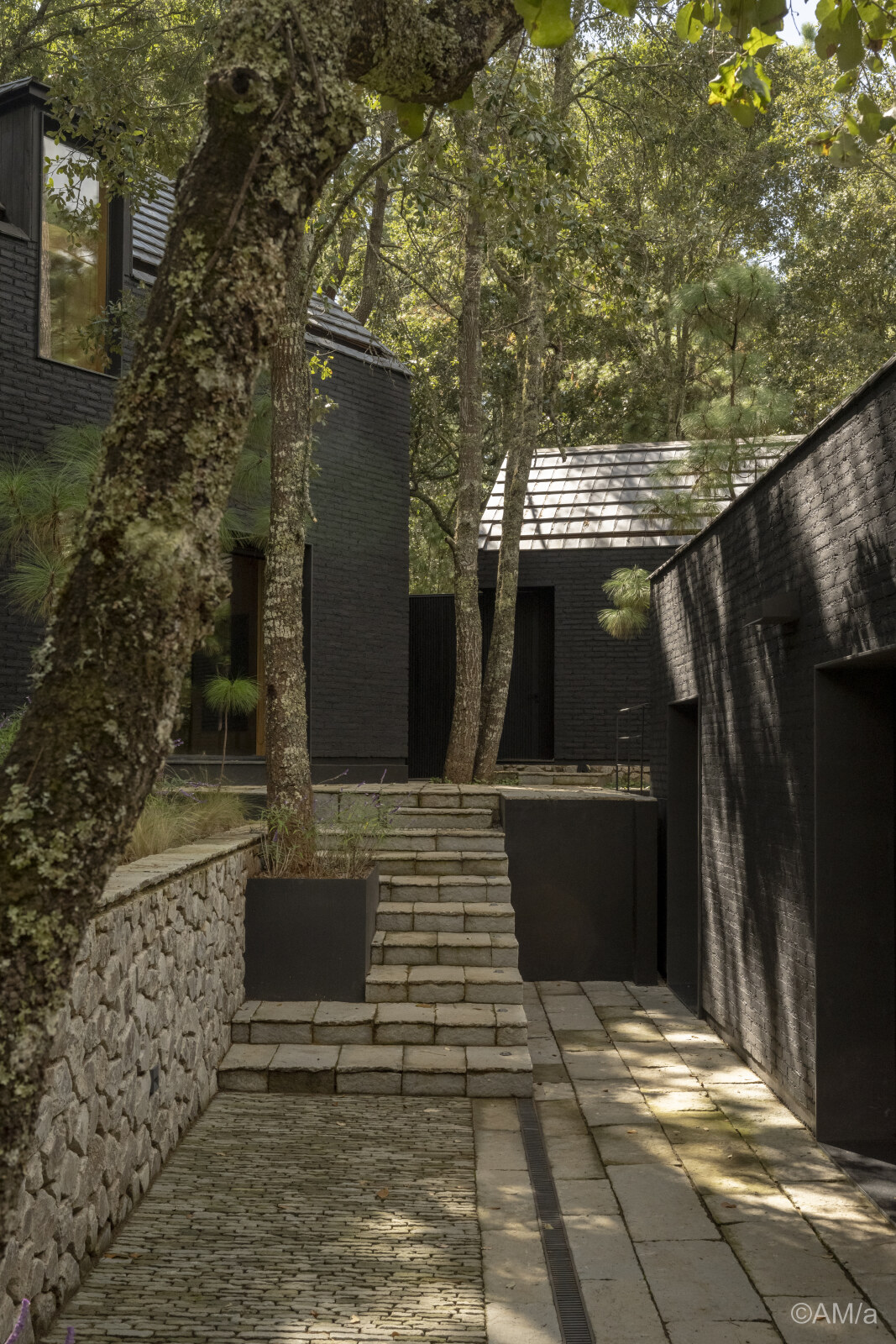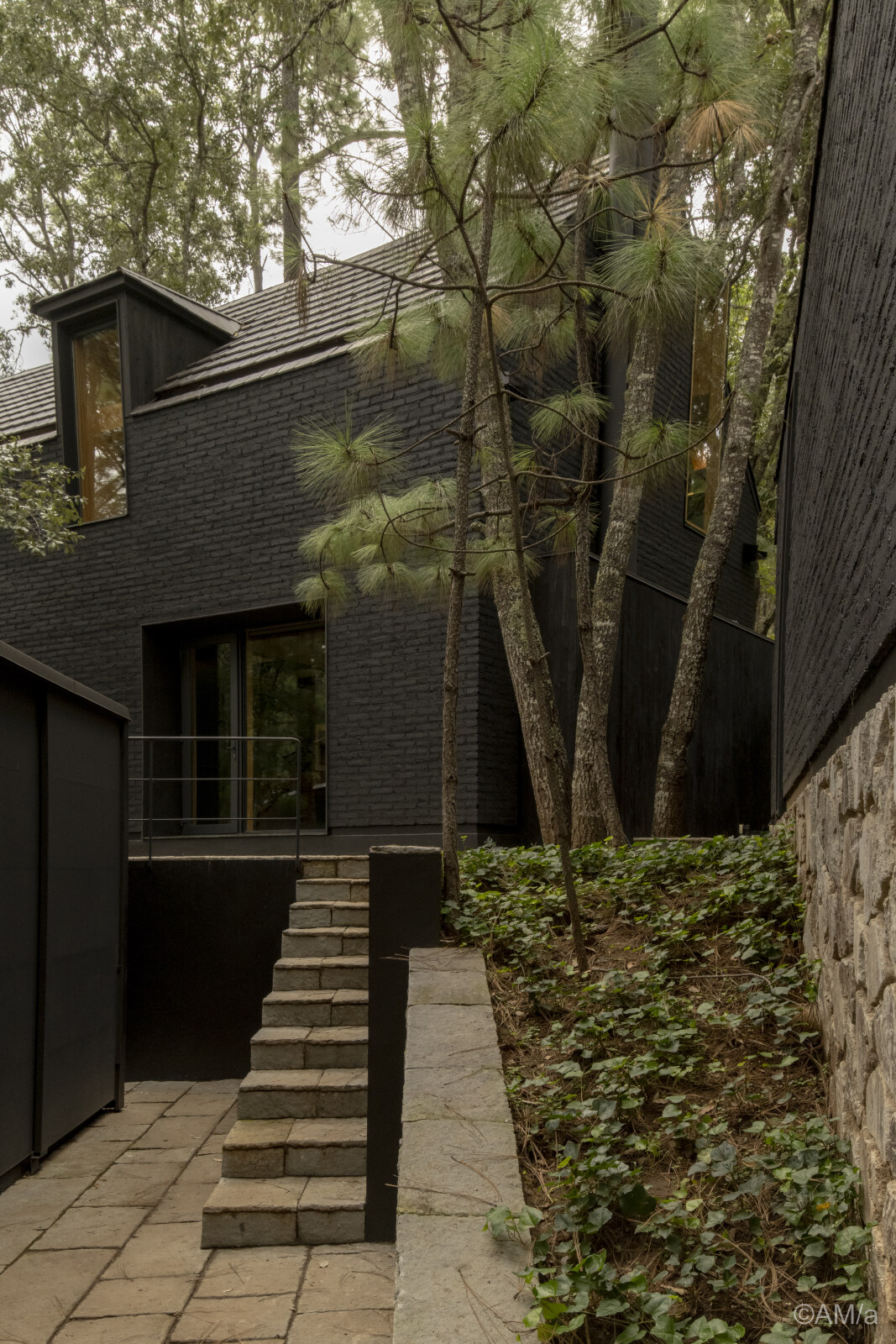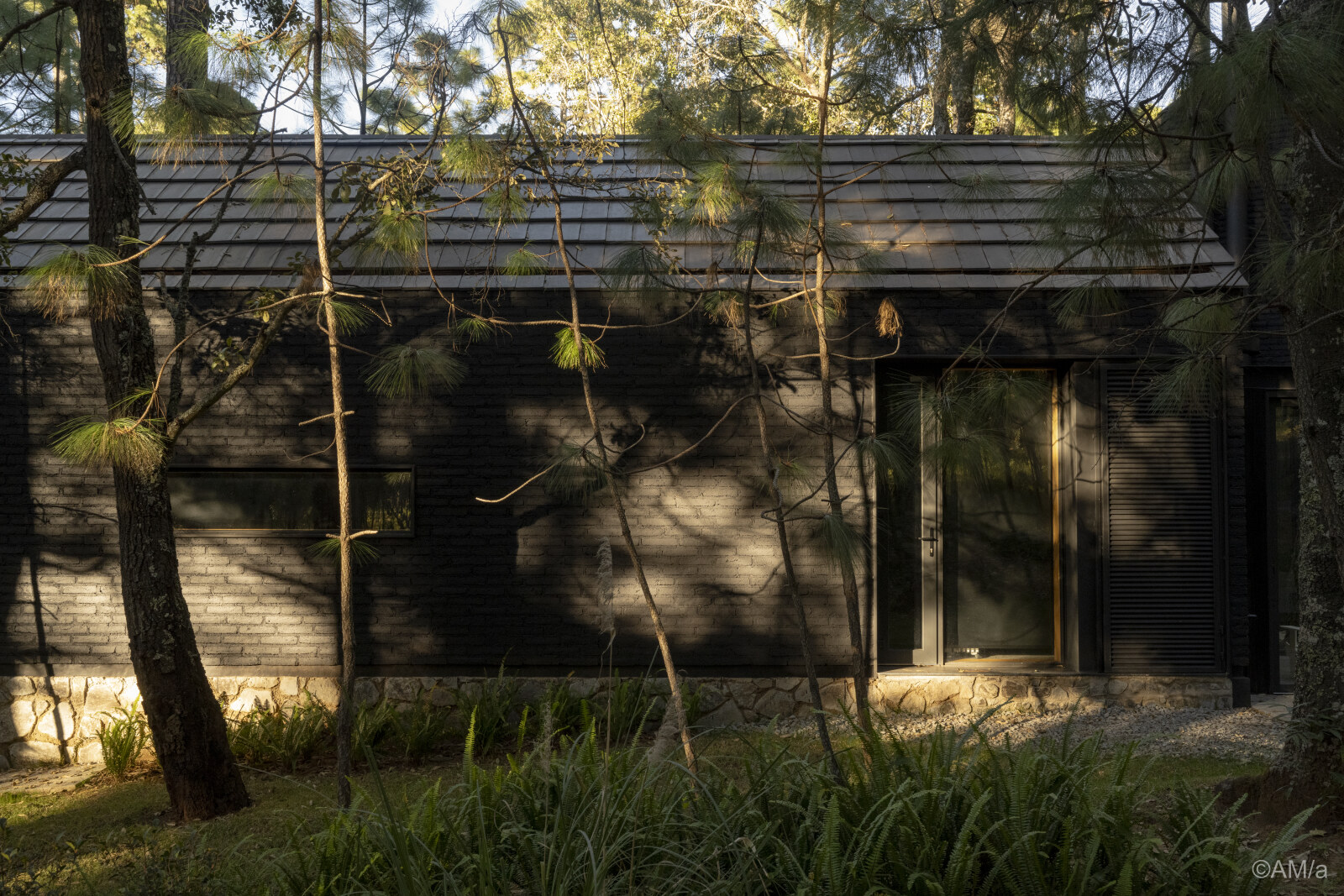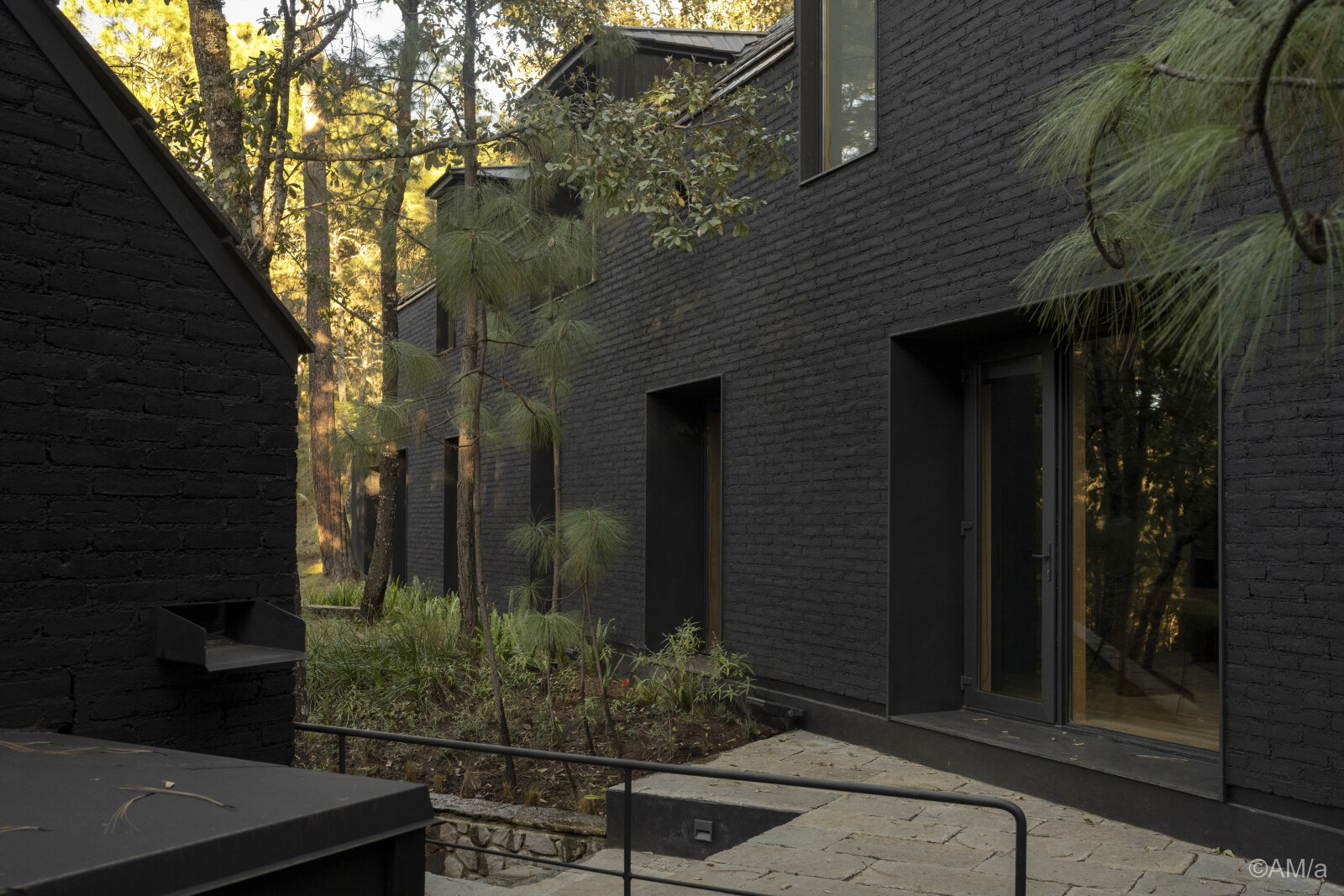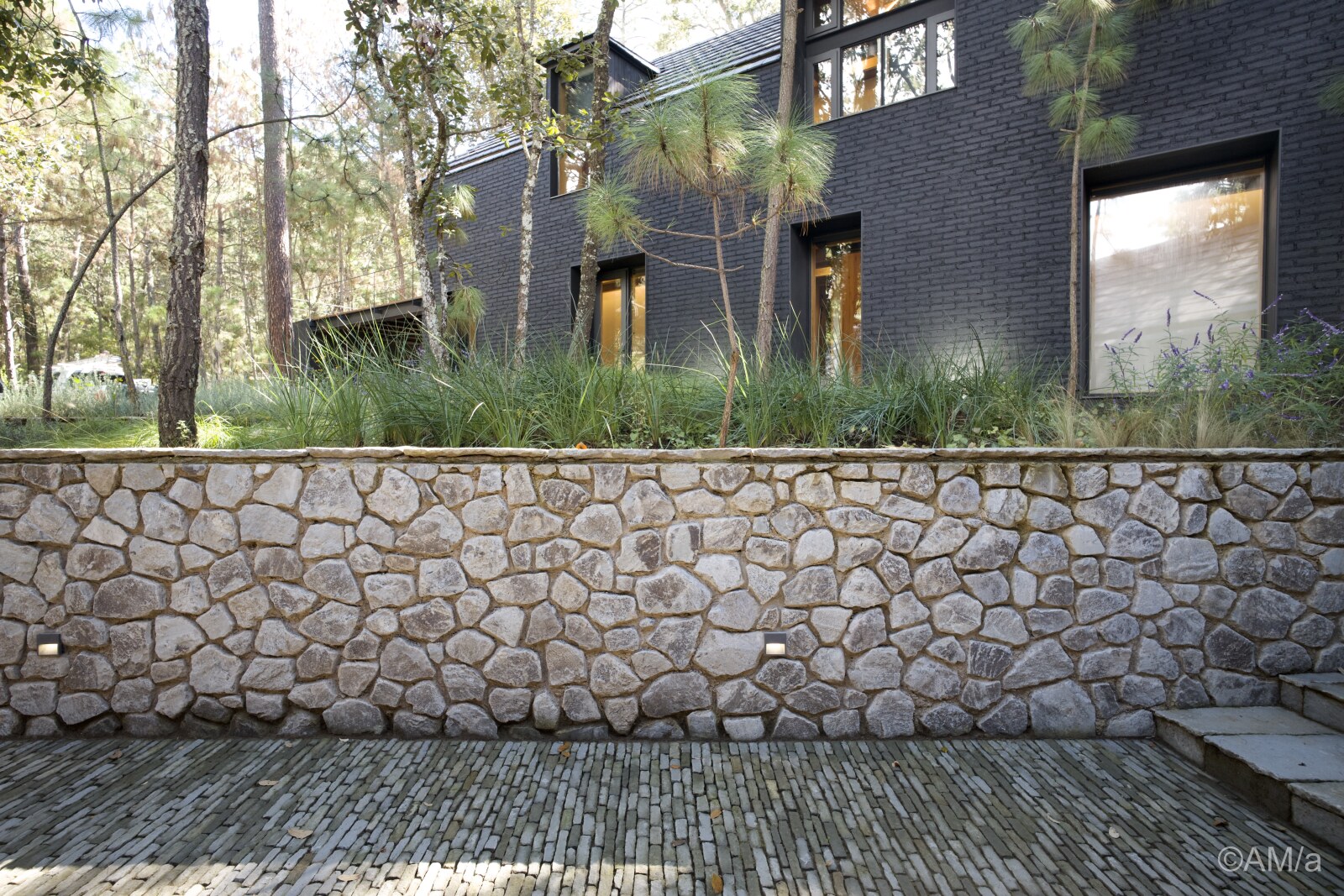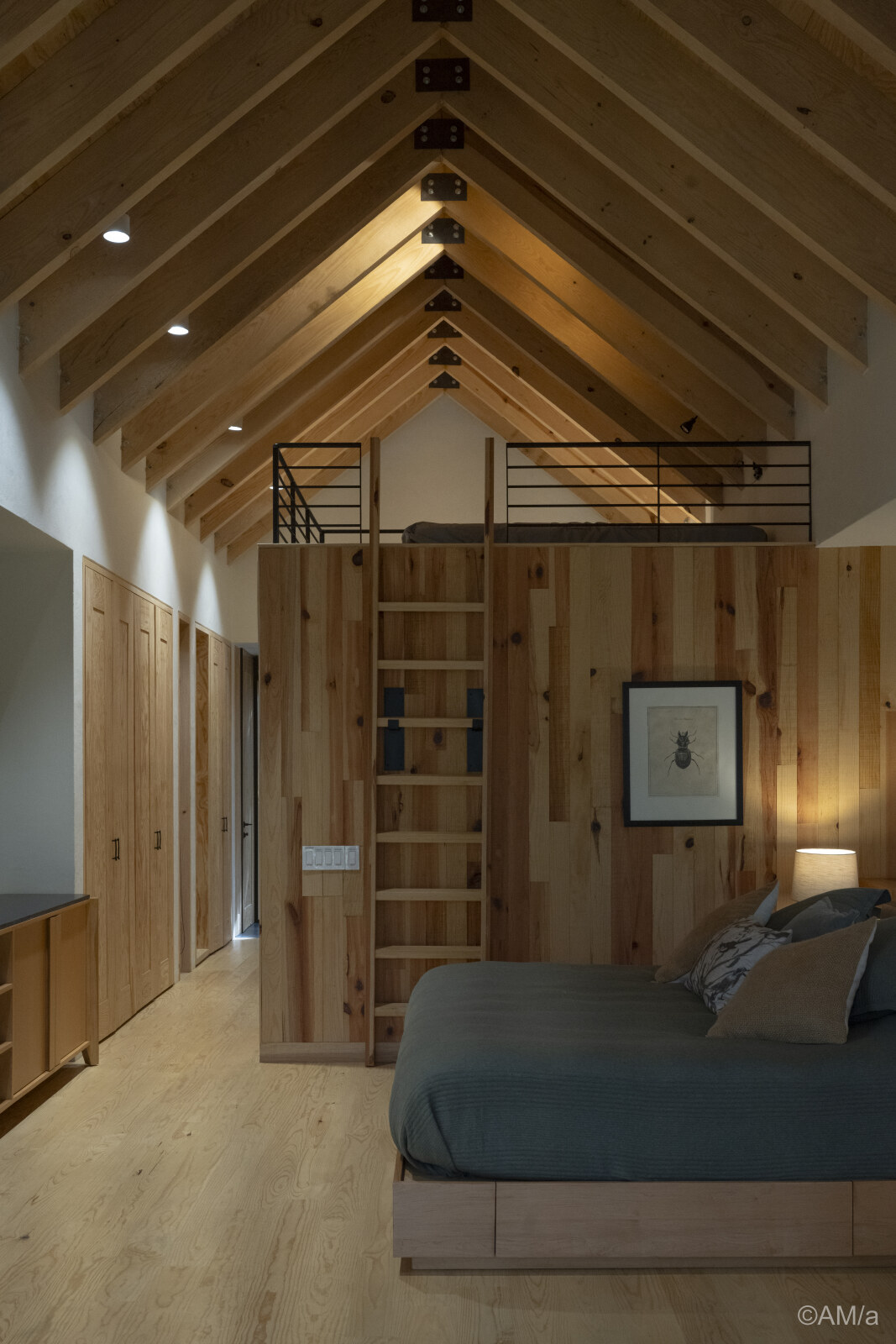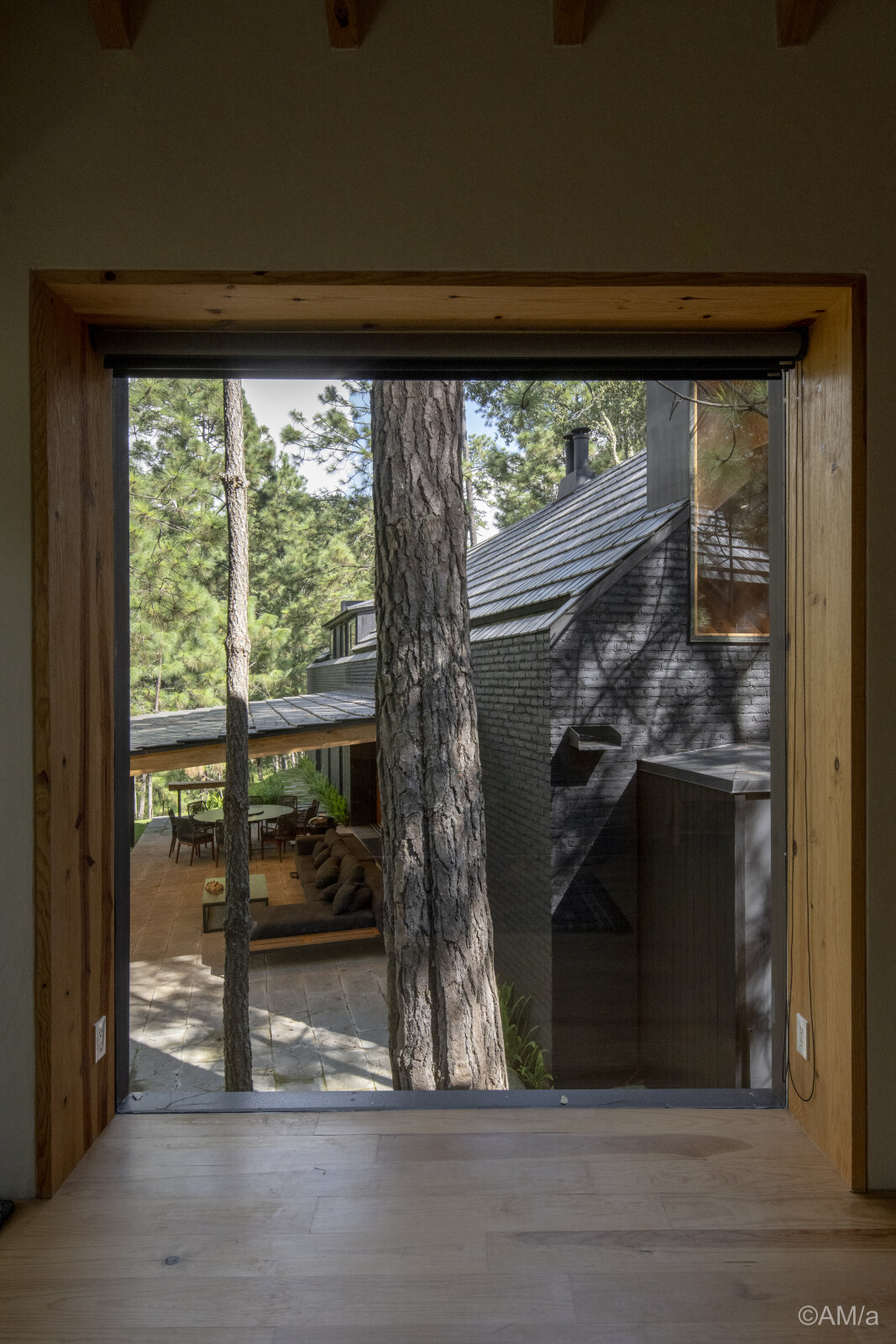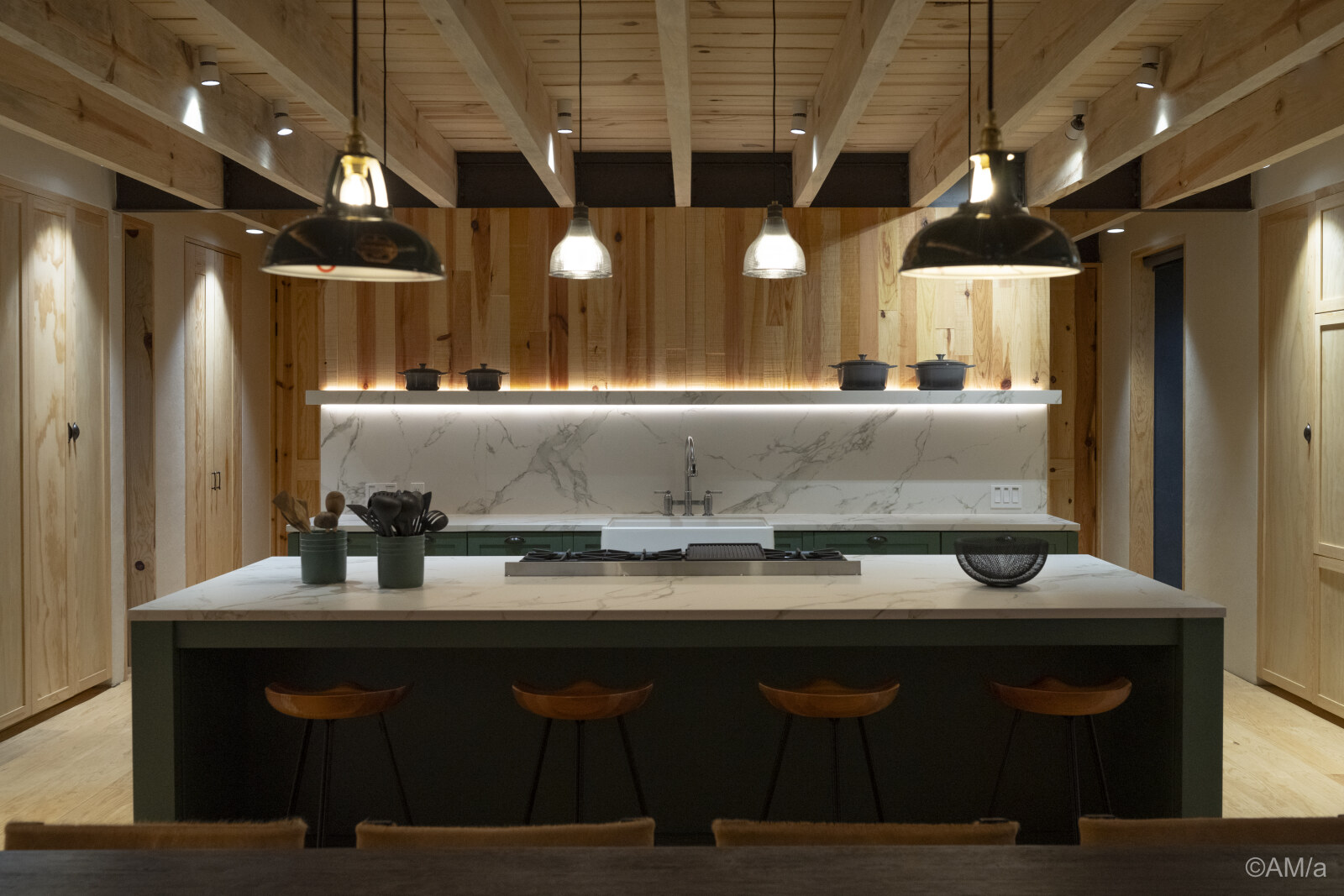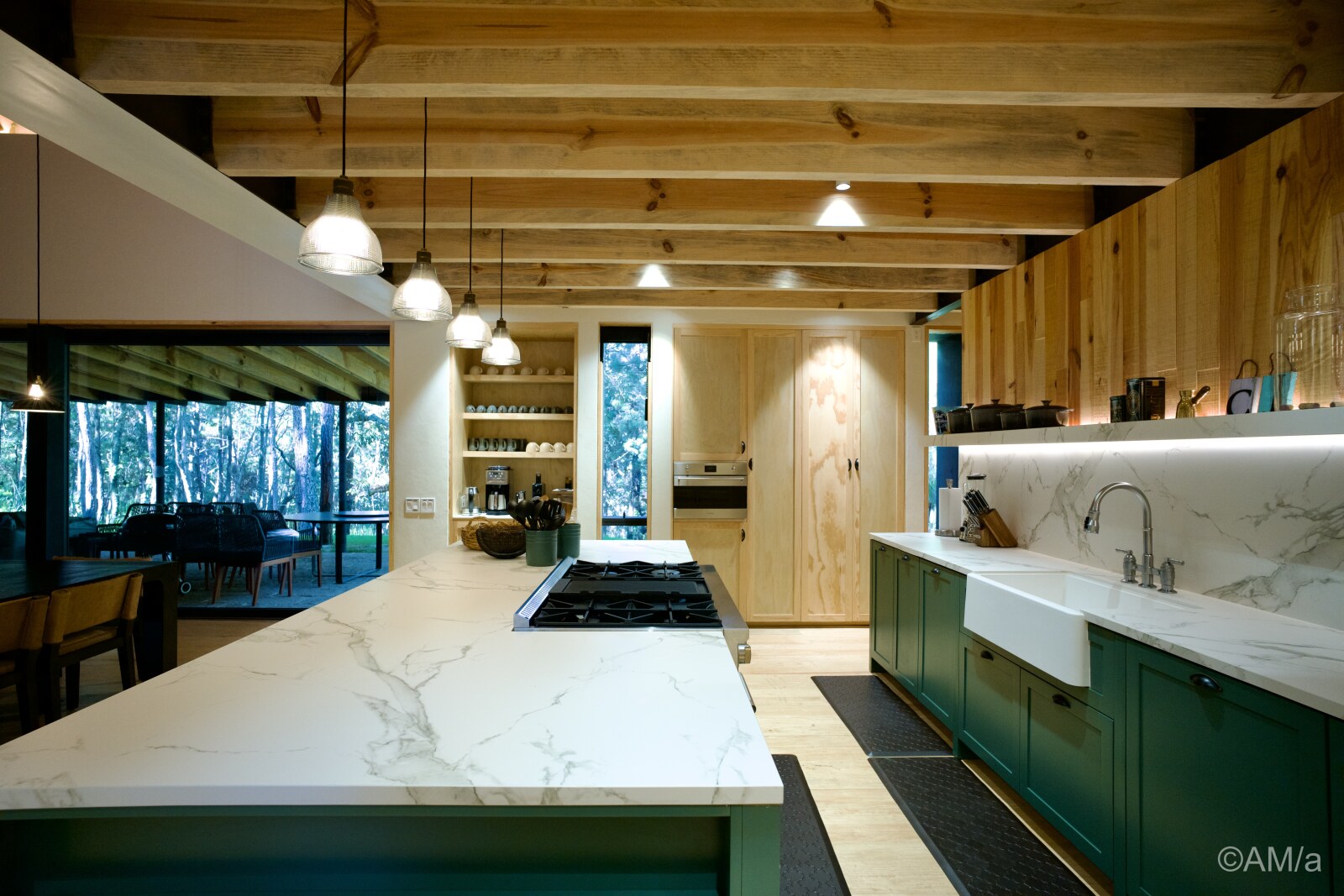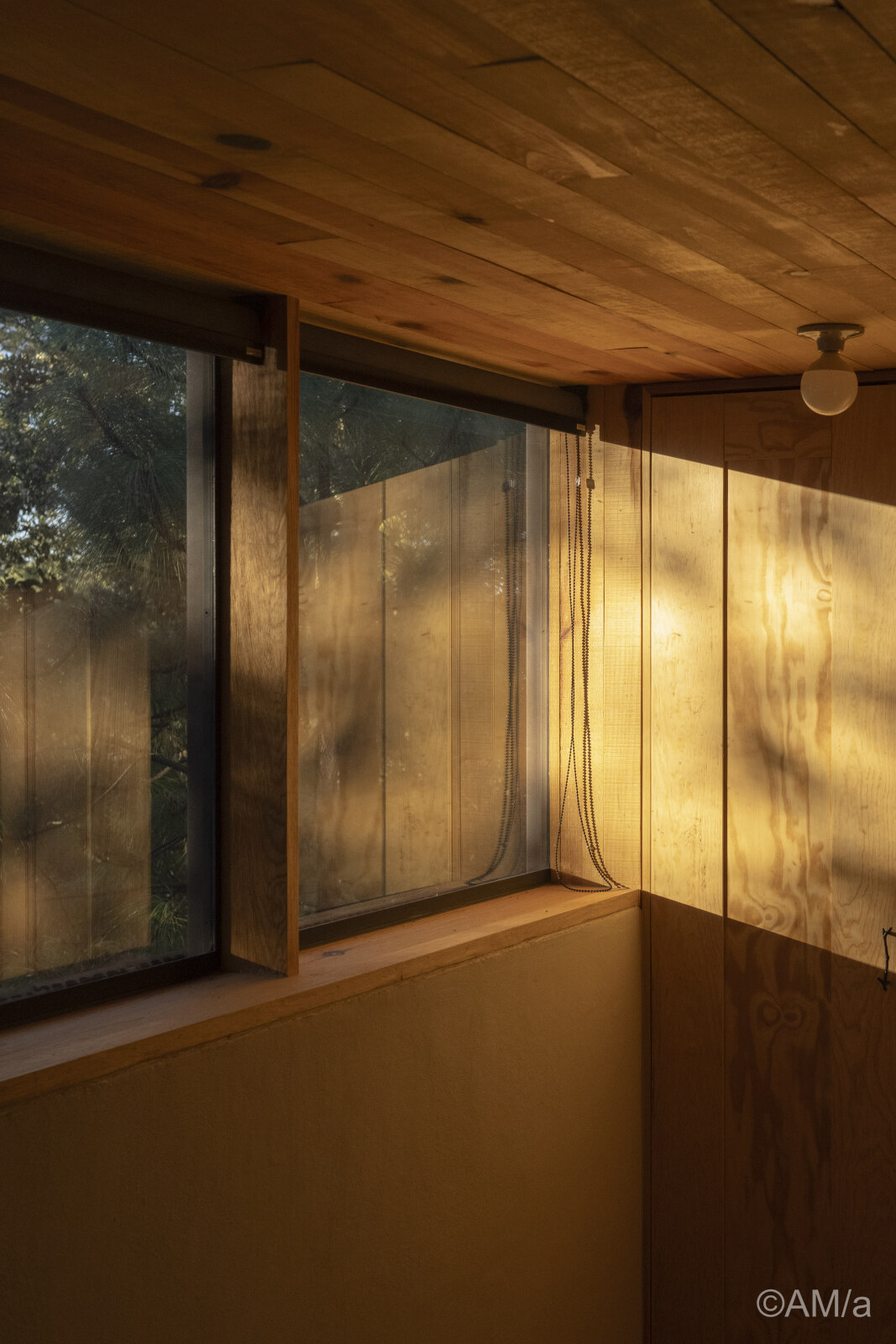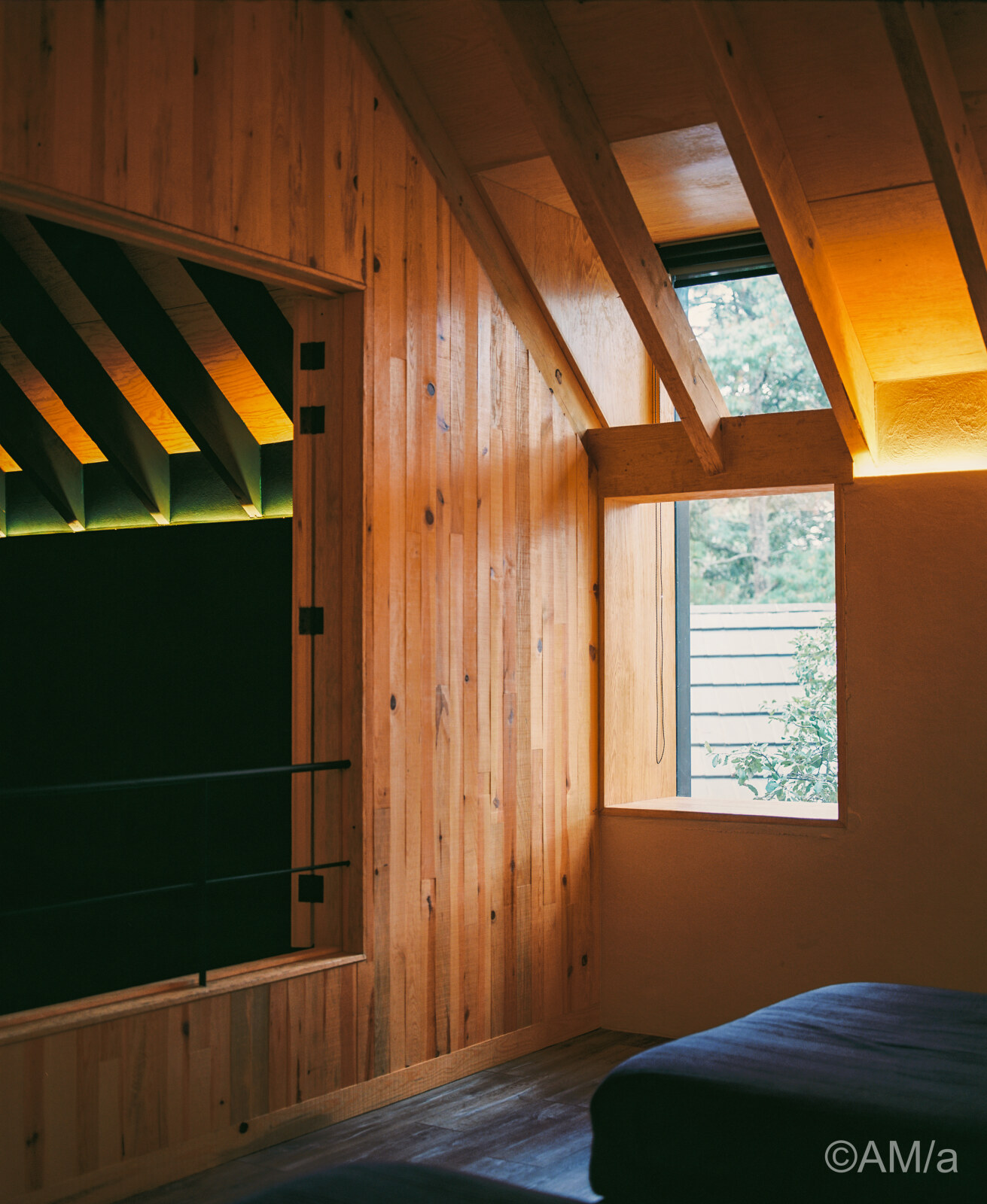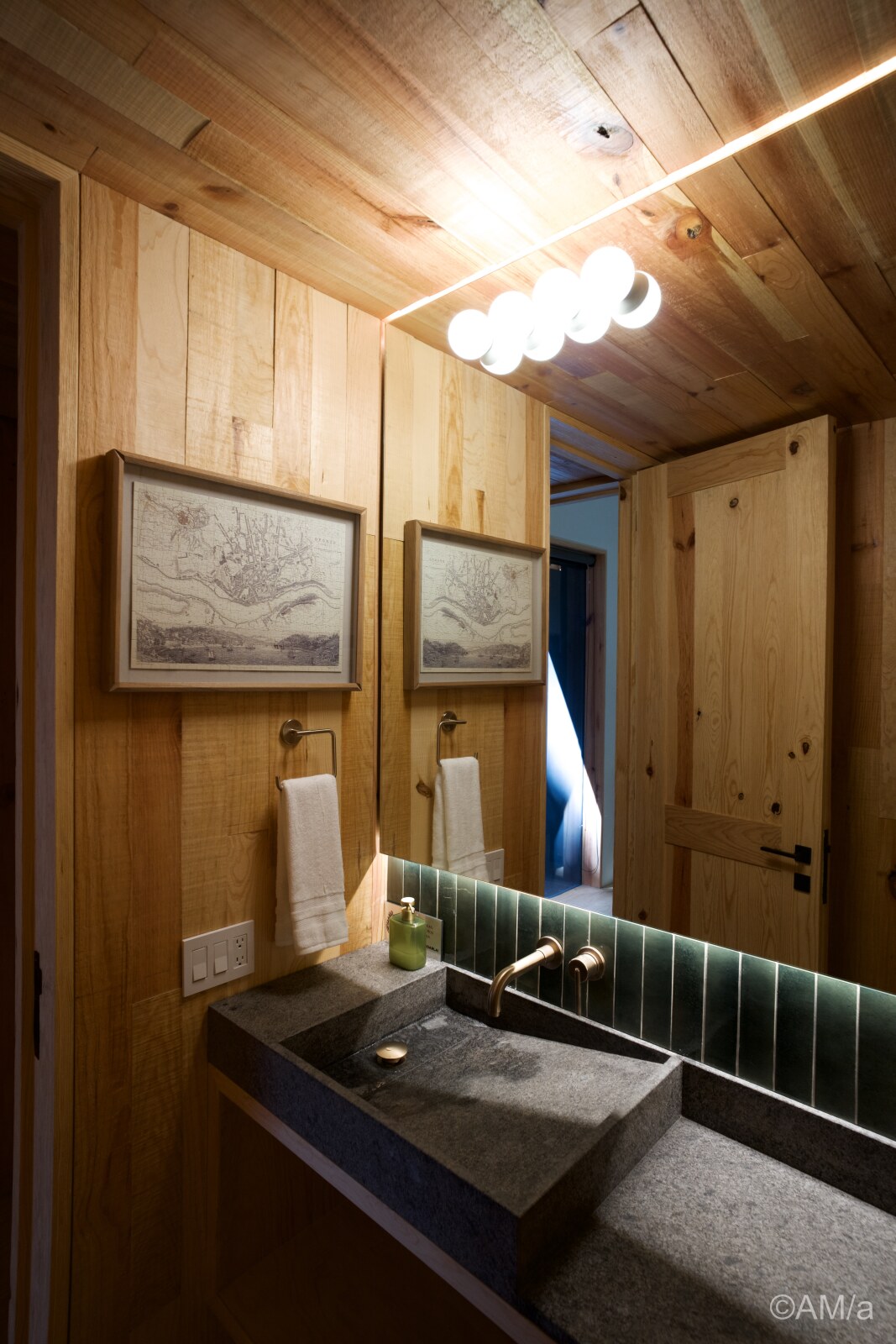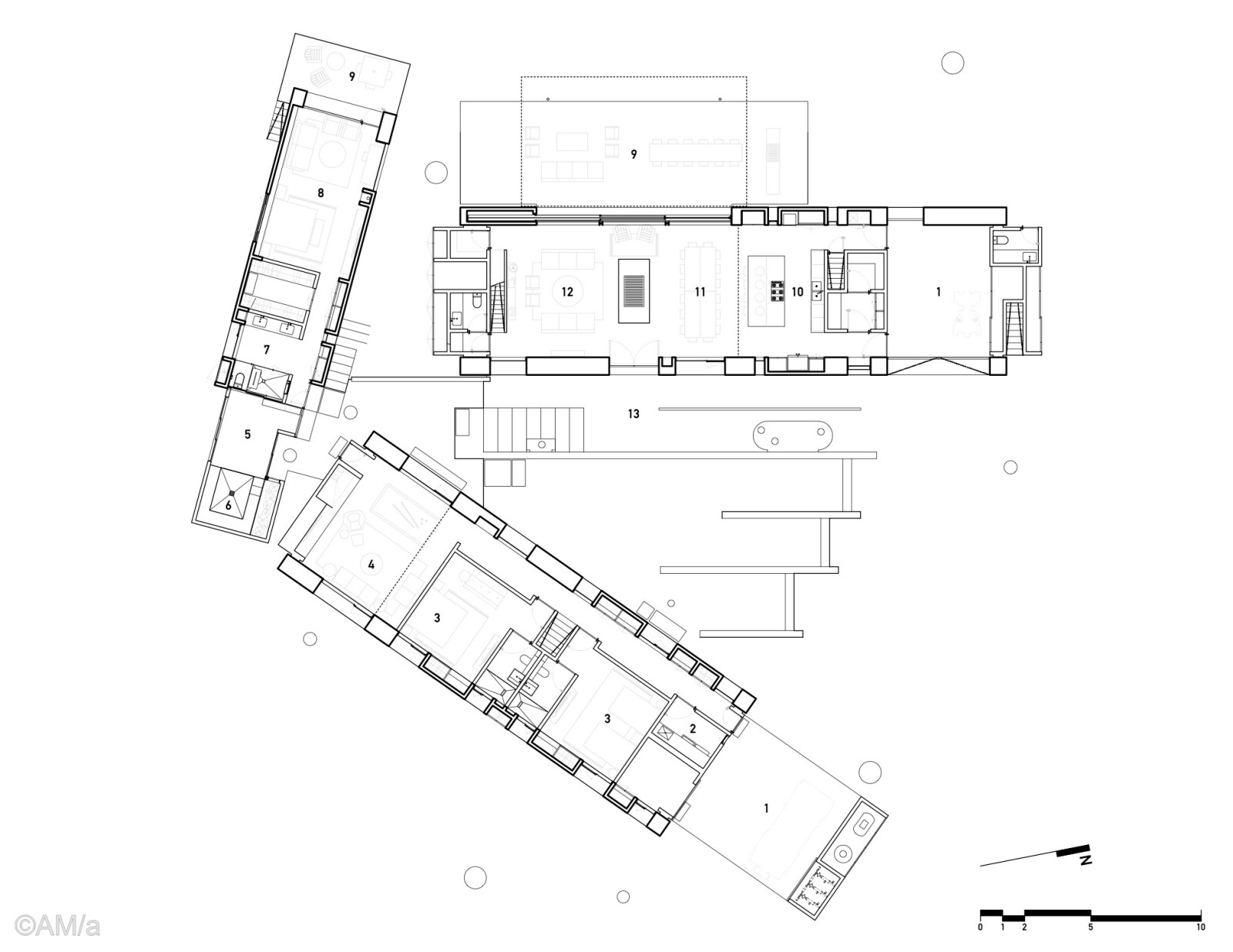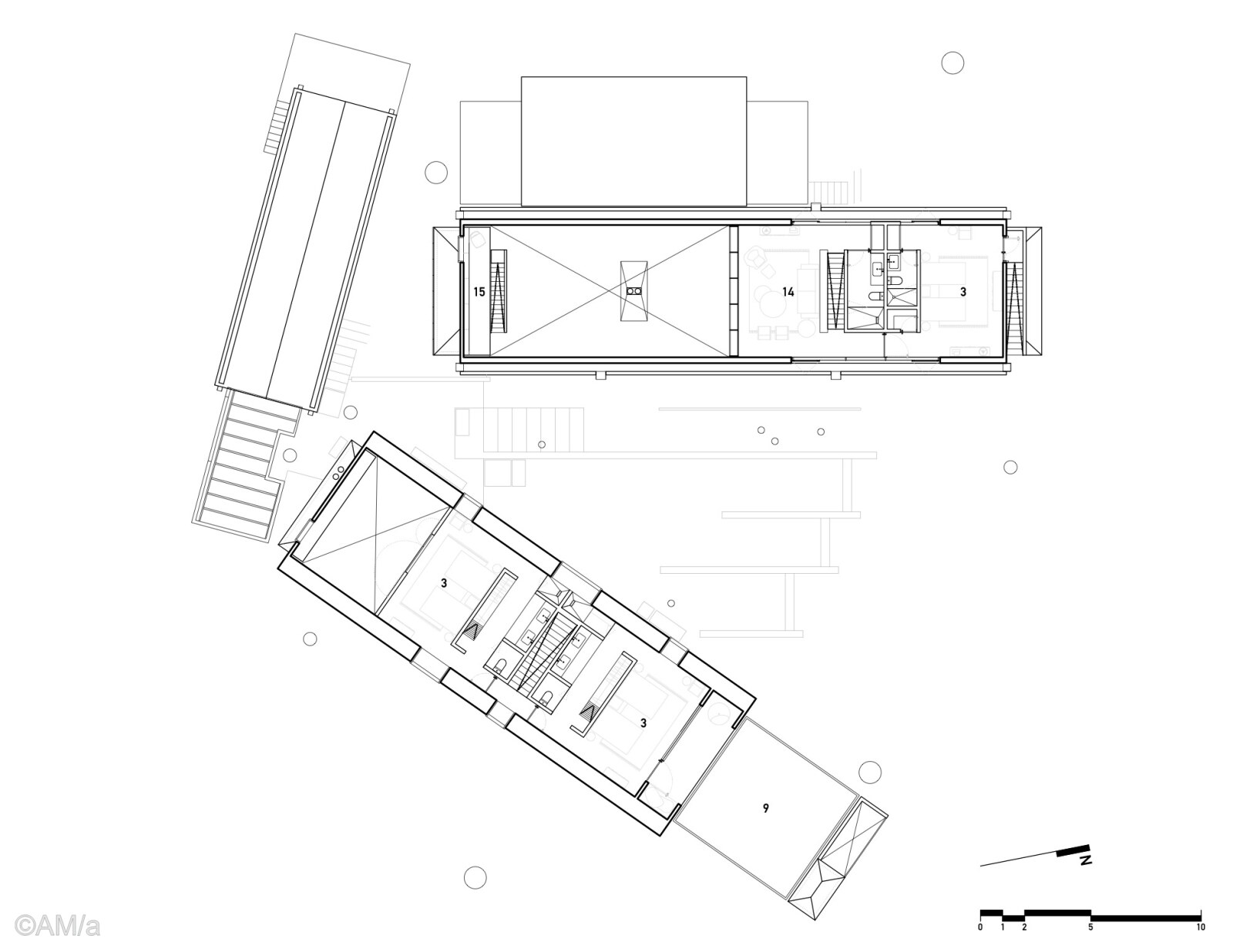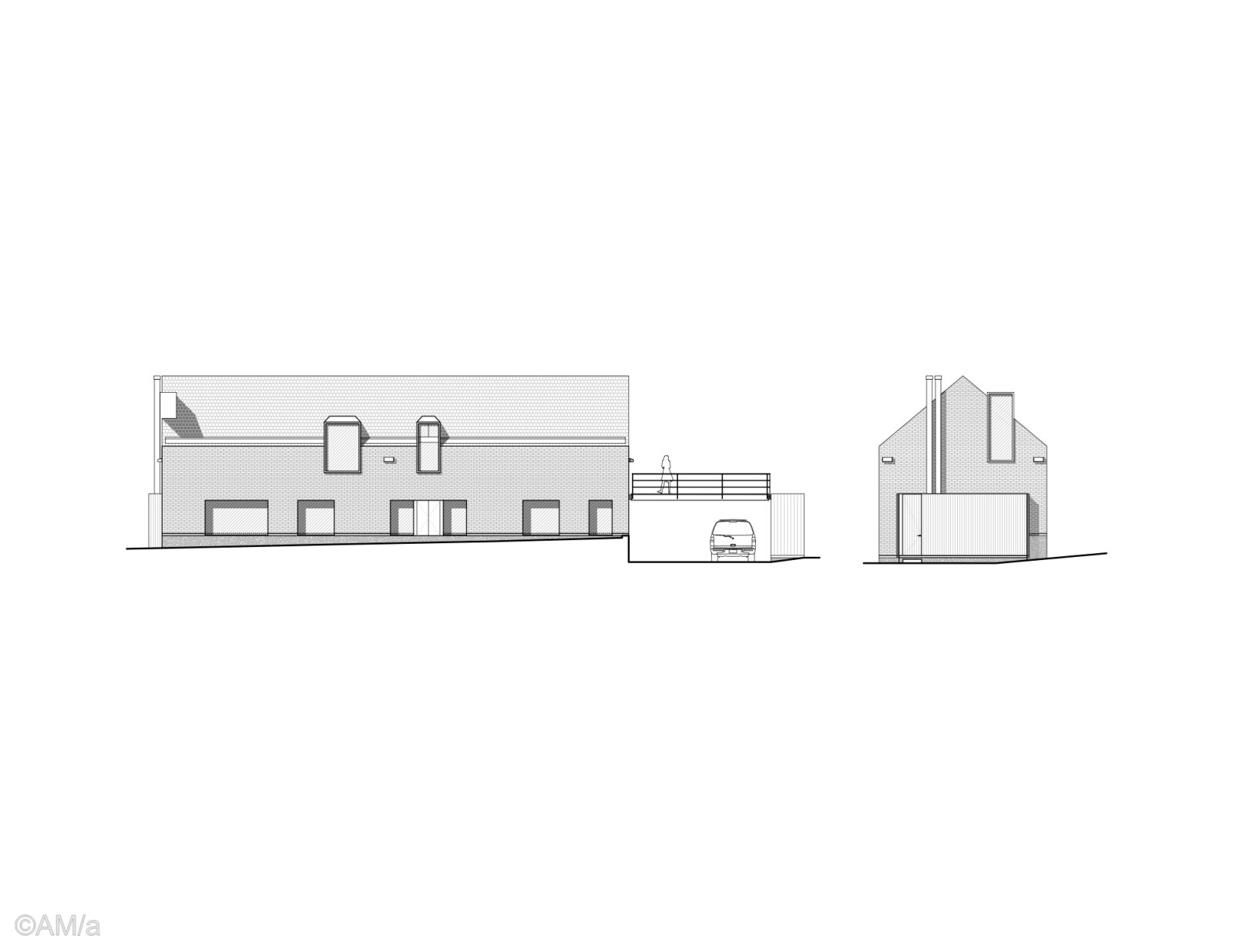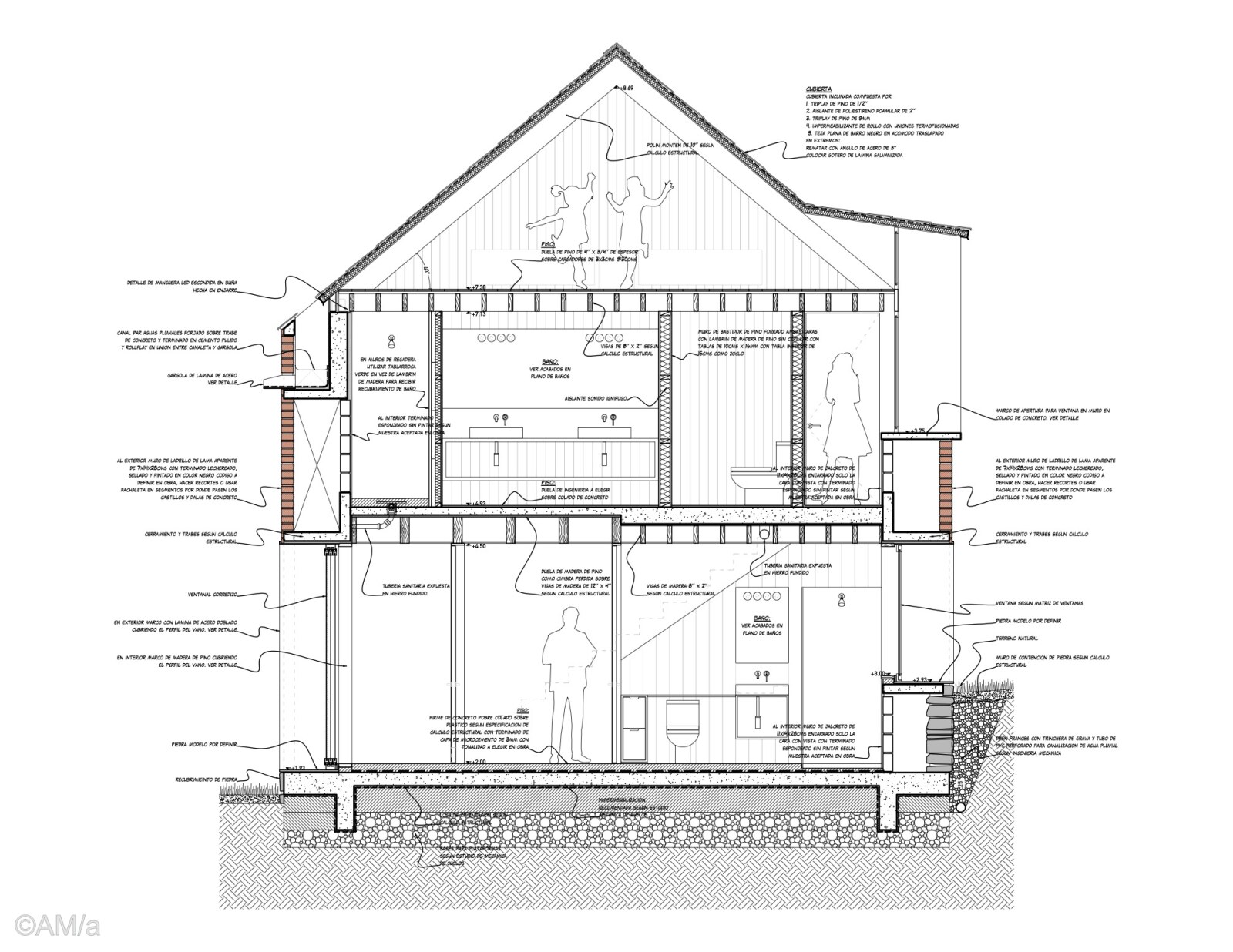- Location: Tapalpa, México
- Plot: 6,672 m2
- Project Area: 800 m2
- Year: 2020-2022
- Built: 2023
- Design Team: Carlos Ruiz Palomino (project leader), Maria José Galindo, Emanuel Goñi
- Structural Design: Cero Motion - Juan Jesús Aguirre
- General Contractor: Dare Arquitectura
- Carpentry sub contractor: Ricardo Flores
- Kitchen: Cucina Capitale
- Landscape: Antonio Rodea
- Photographs: Fernanda Leonel, Juan Diego Taylor y Alvaro Moragrega
Casa C&J consists of three independent volumes united and interlaced with an open air vestibule. The volumes contain different parts of the program and provide independence of use while at the same time making the forest surrounding the house an intricate part of the project. The largest of the cabins has the living room, dining room and kitchen in a great room with a large fireplace dividing the living room from the dining room. Above the kitchen sits a reading area that also serves as guest room. The cabin also has a garage with a room above it for the help and/or guests which can be accessed from the inside as well as directly from the outside.
The second cabin has 2 guest rooms, a play room and 2 children rooms, each with a open attic for the children’s guests. While the master bedroom is located in the third and smallest cabin which has a dressing room and a master bath room connected to a protruding volume with a glass roof with a spa.
The design process consisted of elongated brick envelopes with wooden boxes on the inside that protruded to the outside on the short side of the brick boxes with shou sugi ban wood. In the interior all the brick walls are plastered, while all inside divisions are in natural pine wood. The final composition is a clear system used throughout the 3 cabins: brick envelopes with black wood boxes protruding from the short side of the cabins.
The building method was kept simple, all the cabins were built with red brick painted black and shou sugi ban wood siding. The roofing consists of wood beams, insulation, water sealing and black clay flat roof tiles. The exterior of the three cabins is composed of a monochromatic black with stone floors. All the interiors have hard wood pine flooring. The windows have a steel sheet frame on 3 sides and a stone ledge. Fixed window panes use custom made steel framing, while moving panes are standard PVC double glass windows and or doors.
While must of the property has kept its natural vegetation, landscape design is mainly concentrated in the space between the three cabins and consists of forest flowers that adjust well to the environment.
